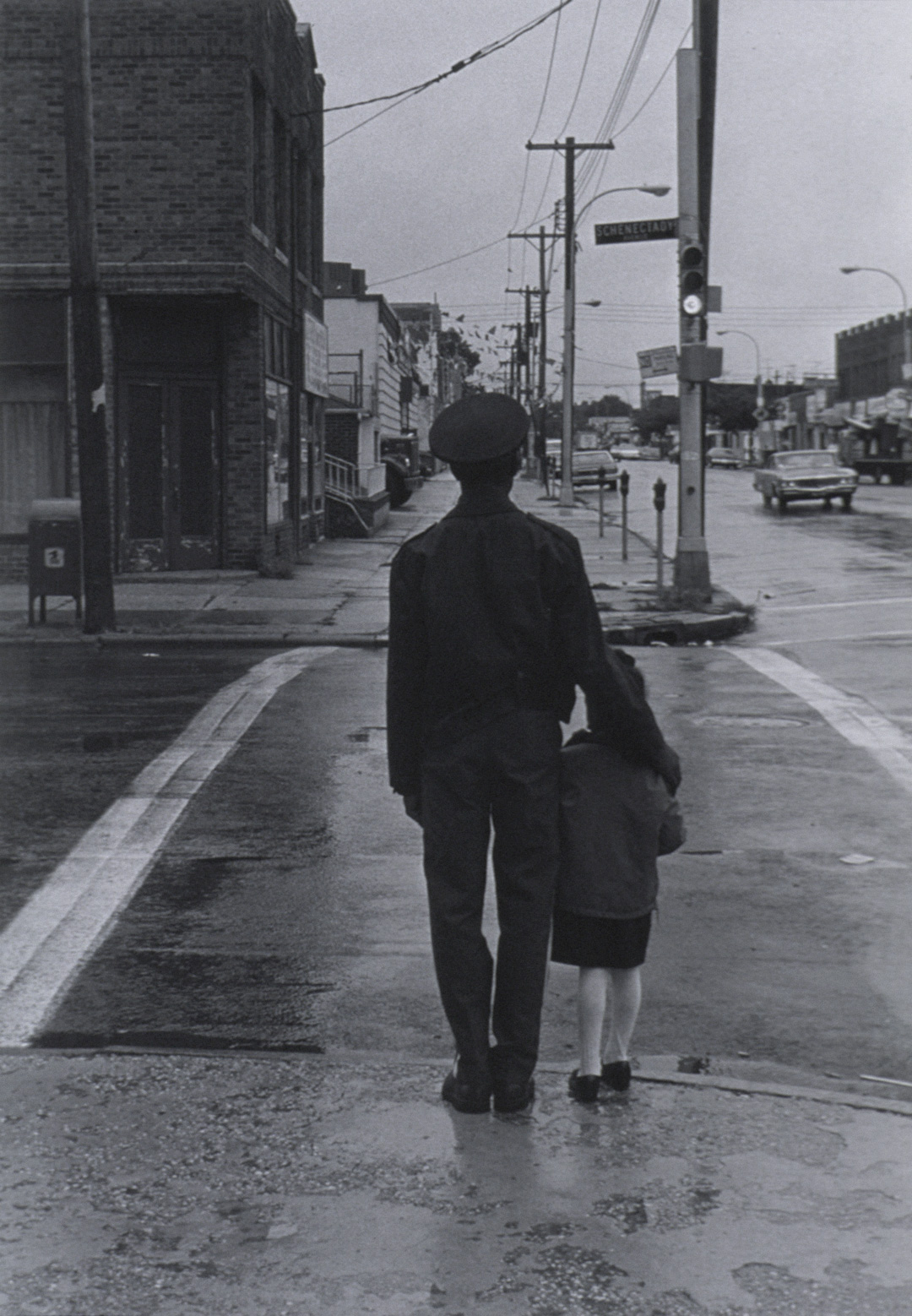Object of the Week: Man and Girl at Crossing

Born in Harlem in 1919, Roy DeCarava came of age amid the flourishing artistic activity of the Harlem Renaissance. Trained as a painter, he would not take his first photograph until the late 1940s, and even then it was to assist his painting practice. However, DeCarava soon turned exclusively to photography, using the medium to produce a record of everyday Black life in Harlem.
In 1952, DeCarava became the first Black artist to receive a Guggenheim Fellowship in photography. A series of photographs—“subdued pictures of everyday Harlem existence, from intimate family moments to street play and subway gloom”—were made using the grant, and would eventually be published in 1955 with accompanying text by Langston Hughes in The Sweet Flypaper of Life.[1]
DeCarava, also a musician, would go on to photograph many jazz greats like Billie Holiday, Duke Ellington, Count Basie, and Thelonious Monk, seeking to create a visual equivalent of jazz’s improvisational structure and off-time beat. The artist considered the camera, like the piano, to be an instrument of expressive potential, and mobilized it as a tool. The relationship he saw between jazz and photography hinged on the belief that “in between that one-fifteenth of a second, there is a thickness.”[2]
For the artist, photography was a way to counter his observation that “black people were not being portrayed in a serious and artistic way.”[3] As a result, his images illustrate ordinary Black life perceptively and immediately. His pictures are thoughtful and considered—often exploring light and shadow to assist in his subtly dramatic compositions.
In Man and Girl at Crossing from 1978, we see just how sensitive DeCarava was to the quiet and contemplative moments that surrounded him. It’s an uneventful scene—a man and a young girl wait to cross Schenectady Avenue in East Flatbush. Brooklyn had seen a rainy day that day, and the gloom sits heavy on the wet cement and asphalt. Framed by the crosswalk and sidewalk before them, the two figures are powerfully silhouetted—paused in a still moment of togetherness before continuing on their way.
– Elisabeth Smith, SAM Collection & Provenance Associate